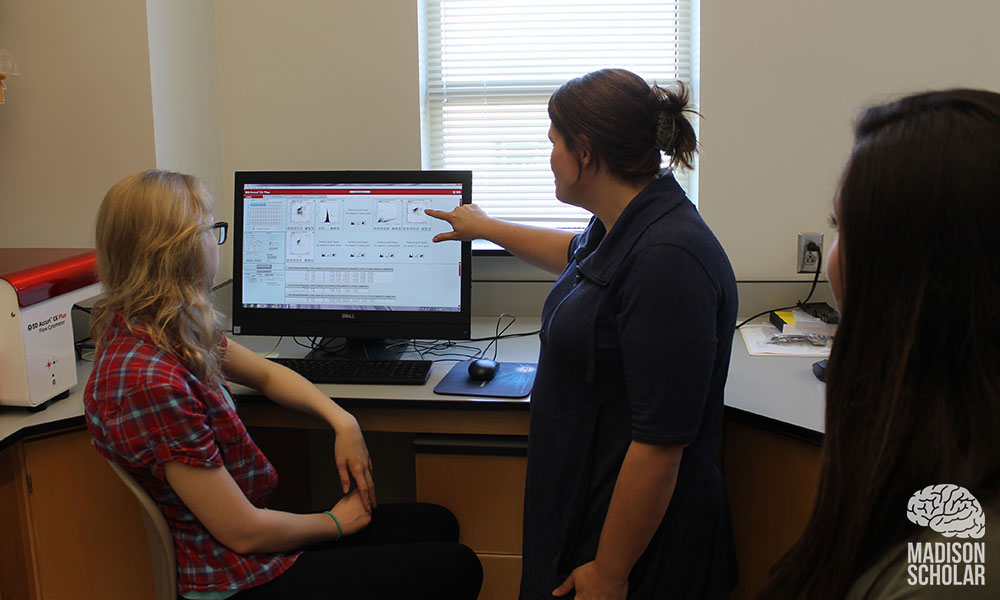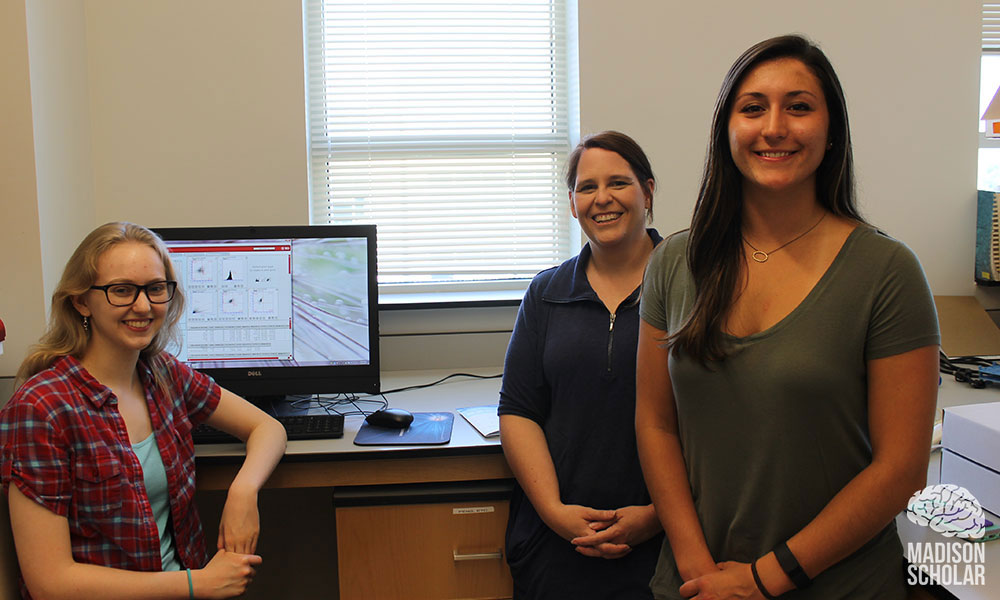Getting a green light
New technology showing promise in NIH-funded research
Science and Technology
SUMMARY: One of the main goals of the research, which received $445,500 from NIH, is to discover what cells are responsible for producing IL-3 in living mice and the timing involved in its production.
The second year of a three-year study funded by the National Institutes of Health is getting off to a good start for biology Professor Chris Lantz.
Lantz said laboratory experiments this spring and summer have confirmed that a fluorescent marker protein is working the way it should when a protein in the immune system, Interleukin‑3, or IL-3 for short, is activated.
One of the main goals of the research, which received $445,500 from NIH, is to discover what cells are responsible for producing IL-3 in living mice and the timing involved in its production. IL-3 is generally good for fighting off infections, but experiments in Lantz's lab have shown that it has the opposite effect with malaria. Additional knowledge about when and where IL-3 is produced could eventually lead to better treatments for malaria and other diseases.
In experiments with white blood cells collected from mice with genes that have been modified to alert to the presence of IL-3, "we've confirmed essentially that when IL-3 is made in mice, the fluorescent protein is also produced," Lantz said. He said more testing is needed "in situations where we know when IL-3 is made" before doing additional experiments with malaria. Much of the testing of the fluorescent protein has been done with hookworms, which infect the small intestine and trigger IL-3 production.
Tracy Deem, an immunologist from Bridgewater College who serves as an adjunct assistant professor of biology at JMU and who works with Lantz, said, "Now the question is, what type of T cell (a type of white blood cell) is actually making this. If we polarize the T cells to become different types of T cells, we're hoping to see that one population makes the IL-3."
Lantz said he, Deem and students who are working with them are looking forward to publishing the results of the experiments using the fluorescent marker protein this fall.
 |
| Bridgewater College biology major Chandler Parker (left), Bridgewater College immunologist Tracy Deem (center) and JMU biology major Jenny Russell are working with Chris Lantz on the research. |
Jenny Russell, a senior biology major who will graduate from JMU in May 2018, said she is enjoying the summer research experience that is helping her prepare for a future in medicine. "I love doing this research. It's relevant to what I want to do and working in an immunology lab is very beneficial."
Chandler Parker, a biology major at Bridgewater College who also is preparing for a career in medicine, said she was happy to work on the project for a second summer. "I love the project and really wanted to do it again," she said. "And now I'm looking into Ph.D/MD programs because of the work I have done with Dr. Deem."
More information about the research is available on the JMU website.

